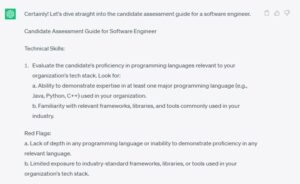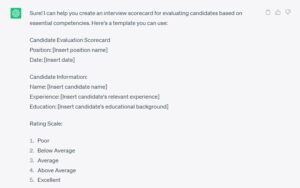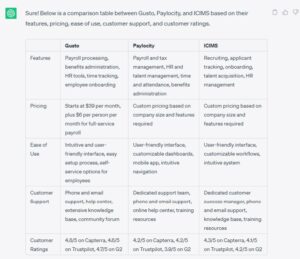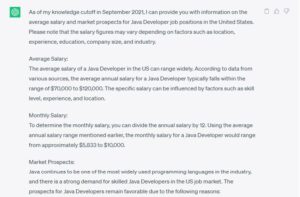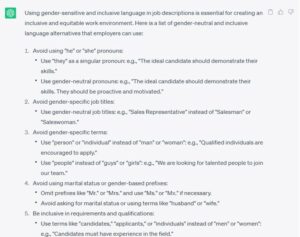To help you discover innovative ways to source top talent, we asked business owners, CEOs, and HR professionals to share their most effective techniques. From looking for candidates internally to utilizing PPC challenges, explore these talent sourcing strategies shared by industry leaders.
Utilize Your Internal Talent Bank
Sourcing candidates from the internal talent bank has worked well for us. We have a huge database of applications and information about candidates who have already gone through our company’s selection process or who have registered spontaneously.
On the basis of this data, we have categorized the candidates by skills, experience, and areas of interest. Thus, when a vacancy arises in our company, we search the talent bank for candidates who have a profile compatible with the open position.
This makes us agile in the sourcing process, as there are already previously evaluated candidates with available information.
Lou Reverchuk
Co-Founder and CEO, EchoGlobal
Ask for Referrals in Interviews
A unique and highly effective talent-sourcing technique we employ involves capitalizing on the networks of our prospective hires. Whenever we interview a candidate who shows promising talent and a high likelihood of joining our team, we make it a point to ask who in their personal or professional circle they would suggest as a potential addition to our company.
This strategy is based on the principle that top talent often surrounds itself with other high-performing individuals. By asking for referrals during the interview process, we are effectively extending our reach into their personal and professional circles.
These referrals are typically noteworthy individuals, and having the candidate’s reference makes it much easier for us to approach them. Using the candidate’s recommendation as an introduction, we’re able to engage with these potential hires on a more personal level.
Martin Potocki
CEO, Jobera
Organize Hackathons
Hackathons are events where programmers, designers and other creative individuals come together to collaborate and solve problems. They provide a unique opportunity to identify and recruit talented individuals who can contribute to your organization.
Here’s how it works: Organize or support a hackathon event focused on a specific theme or challenge related to your industry or company’s needs. During the event, interact with participants and observe their problem-solving skills, technical expertise, creativity and teamwork. Provide incentives such as cash prizes, internship opportunities or job offers for outstanding performers or winning teams.
Use the hackathon as a networking opportunity to build relationships with talented individuals. Exchange contact information and stay in touch with those who impress you. After the event, reach out to the participants you were interested in and invite them to apply for relevant positions within your organization.
Luke Lee
CEO, Ever Wallpaper
Leverage Freelance Platforms
We’ve found really good levels of success hiring for specific skill sets by placing job ads, or searching for freelancers on platforms like Upwork. Some of these connections have led to long-term working relationships with specialists we return to again and again for work.
Another good technique we’ve found success with is finding candidates in relevant specialist skill forums like Reddit.
Sam Jacobs
Co-Founder, GrowRoom
Host Competitions
One effective strategy for sourcing talent is hosting competitions. This isn’t just for coding hackathons either. This approach can work for any field!
If you’re hunting for creative talent, say, a copywriter, you can host a writing contest. Let’s see who can whip up the most persuasive product description or the most captivating blog post. Or maybe you’re in the architectural field. Set up a design challenge for an innovative green building. This can really apply to any field and a modest prize will bring in lots of candidates.
The real beauty of this method is that it’s not just about spotting skills. Competitions like these attract ambitious, competitive folks. And those are exactly the kind of people who can drive your business forward!
Marko Lazarevic
Owner and Editor, Craft Coffee Spot
Start a Blog
As someone who is responsible for hiring her own team of writers, I can say that starting a blog has been a unique and effective way for me to source talent. It served as a platform where I could discuss pressing health concerns and trends, ultimately drawing the attention of dedicated and informed individuals in the health field.
Within the initial six months of the blog’s inception, we attracted over 30,000 distinct visitors and connected with numerous potential team members. Among them was Dr. Barrios, who is now a key contributor to our team. Her debut article alone received more than 10,000 views within its first week.
Nadzeya Sankovich
Senior Journalist, Health Reporter
Build a Unique Employee Referral Program
A unique talent sourcing technique I’ve implemented is our employee referral program with a twist. In addition to offering monetary incentives, we organize friendly competitions or recognition programs for employees who refer exceptional candidates. This transforms employees into enthusiastic ambassadors.
This unique referral program has proven to be a powerful tool for talent acquisition, bringing in candidates who are a great fit culturally and professionally. Moreover, it strengthens our company culture by fostering teamwork, collaboration and a shared commitment to our success.
Curran Van Waarde
Founder, CallScaler
Post Targeted Facebook Ads
Running a digital agency has compelled me to think outside the box regarding talent sourcing. One unique method that has proven successful is leveraging social media, specifically Facebook, for targeted recruitment campaigns. These ads are incredibly cost-effective and allow us to precisely target professionals with relevant job titles at competitor organizations.
By broadcasting the dynamic roles and growth opportunities within our agency, these Facebook ads attract quality candidates and subtly reinforce the advantages of joining our team. This method has shown substantial success for both ourselves and our clients, delivering an economical and efficient way to find new, high-quality talent. It’s a testament to the power of innovative, targeted recruitment in a digital age.
Shane Mcevoy
MD, Flycast Media
Leverage Personal Brands on LinkedIn
We all know that having employees sharing job openings on LinkedIn helps boost reach and engagement… But we take it a step further. Our entire company is encouraged to build personal brands, and create original content on LinkedIn. They share personality alongside company content and thought leadership, highlighting our culture. Several of our employees have vast networks of 10,000+ followers, which increases our reach substantially.
When positions become available, our team members will mention it in their content, rather than just re-sharing a dull job listing.
We’ve seen great success from this—potential recruits often reach out to our employees asking about roles. It’s a more personal approach that enables us to find people who fit in with our company culture, from employees’ networks.
Emily Neal
SEO and Content Specialist, DSMN8
Schedule Short Video Interviews
We receive thousands of applications every month at Kilo Health, and we believe in making the hiring process efficient and enjoyable for candidates and our team. It’s important for us to connect with as many candidates as possible to find the best talent. However, conducting hour-long interviews for every applicant can be time-consuming. That’s why we have implemented a creative solution.
We have established a dedicated sourcing team whose goal is to schedule short and engaging 15–20 minute video interviews with almost every candidate who applies for our open roles. This way, we are able to:
- Speed up our candidate response time (48 to 72 hours on average)
- “Meet” hundreds of candidates every month
- Find the best talent possible (a CV doesn’t always show a person’s potential. On the other hand, a video interview allows candidates to show their potential and motivation much better)
Ilona Bernotaite Bernotaite
Chief People Officer, Kilo Health
Invite Prospects to Industry-Specific Challenges
Instead of relying solely on traditional job postings or recruitment agencies, I invite prospective talents to participate in a real-world, yet non-client-specific pay-per-click (PPC) challenge.
This could be something like optimizing a mock Google Ads campaign or creating a compelling ad copy for a fictitious product. I usually announce these challenges through social media platforms, industry forums and my professional network.
The objective here is twofold. First, it enables potential candidates to demonstrate their abilities in a practical, hands-on manner. Traditional resumes or interviews often fail to capture a candidate’s creative thinking or problem-solving capabilities — this method brings those to the forefront.
Second, it creates a sense of community and engagement around our brand. Candidates appreciate the opportunity to showcase their skills, and they start associating our brand with innovation and opportunity, even if they aren’t ultimately chosen.
John Cammidge
PPC Trainer, Jcammidge






